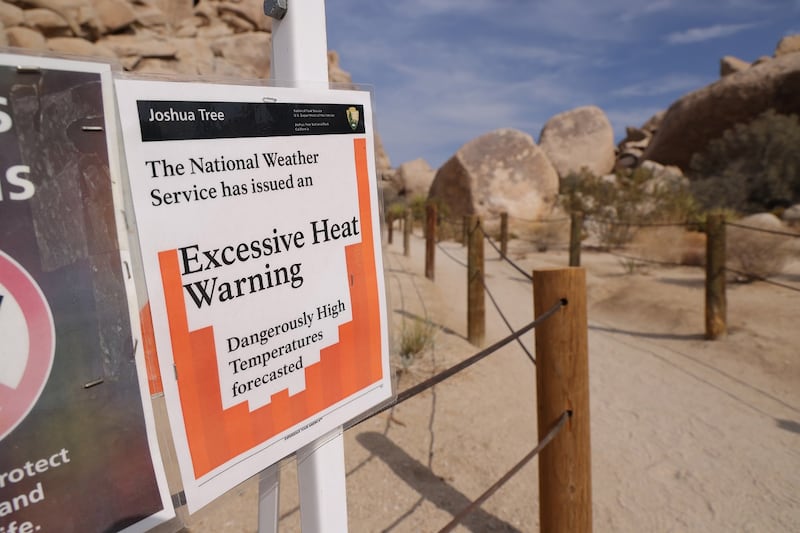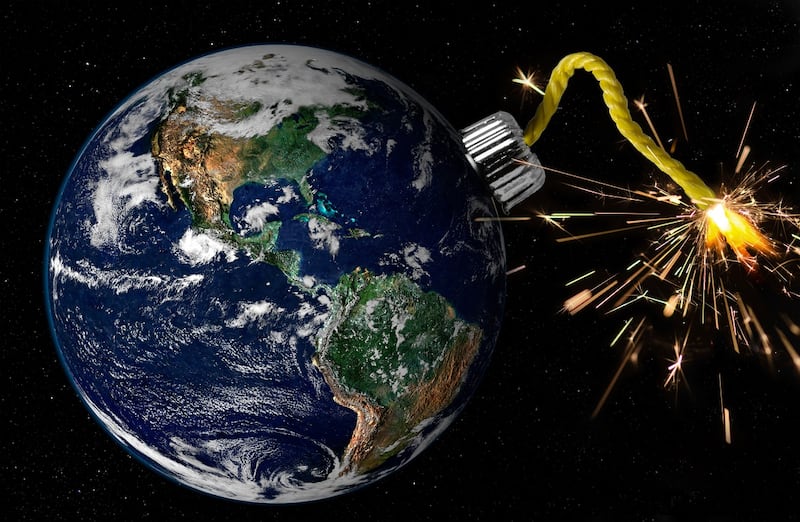Those who won’t see 2070 are getting anxious about what is inevitably facing younger people in their immediate circle. They are acutely mindful that the beauty of Earth, and its life-sustaining powers, are no longer guaranteed – and that nature is under almost intolerable strain.
Within a few decades, vast tracts of the planet are likely to become scarred landscapes or bleached lifeless seas because of rising temperatures driven by emissions associated with fossil fuel-use and human activities. Deep sea diving to view the coral beds of the Great Barrier Reef. A honeymoon in the Maldives. Sea fishing in Seychelles. Skiing in the Alps. All are likely to be regarded as the privileged activities of previous uncaring generations.
Despair at that prospect surfaced at the Cop26 climate conference in Glasgow, even among hardened negotiators. European Commission vice-president Frans Timmermans, showing a picture of his one-year-old grandson Kees, reminded people that he will be 31 in 2050.
More than three billion people will be living in places with 'near unlivable' temperatures by 2070, on a par with the hottest parts of the Sahara
“If we succeed he’ll be living in a world that’s livable,” Timmermans told the politicians. “He’ll be living in an economy that is clean, with air that is clean, at peace with his environment…. If we fail, and I mean fail now within the next couple of years, he will fight with other human beings for water and food. That’s the stark reality we face. So 1.5 degrees is about avoiding a future for our children and grandchildren that is unlivable.”
Chair of the Elders Mary Robinson became emotional on Sky News while pointing the finger at leaders "not in crisis mode". This week she told RTÉ's Morning Ireland: "When the Climate Action Tracker announced during the Cop that, having added up where we were, we were heading for a 2.4-degree world, that's when I had my emotional moment because I know what that means."
Anybody under 60 is likely to have a “less livable” world; facing terrible fires, floods and droughts, where millions of people are displaced. “And anybody under 30 is sure to live in that world. That’s what we’re talking about,” she added.
This goes to the core of the intergenerational injustice of the climate crisis, whereby the child of today will inherit a hotter, more unpredictable world. So what will that look like in 2070? The science has never been clearer.

Children under 10 years old face four times as many climate extremes on average over their lifetimes compared with Gen Xers born in the 1960s. Those born in 2020 could see up to seven times more extreme events in their lives as climate disruption intensifies, with children in low-income countries in the Middle East and Africa bearing the brunt of those extremes.
More than three billion people will be living in places with “near unlivable” temperatures by 2070, on a par with the hottest parts of the Sahara, according to a recent study by archaeologists, ecologists and climate scientists based in China, the US and Europe.
Unless carbon emissions fall, a third of the global population will experience average temperatures across a year hotter than 29 degrees. Less than 1 per cent of Earth’s surface currently endures temperatures averaging 29 degrees.
That extreme heat compares with the narrow 11-15 degree range that has supported civilisation including food production for millennia. Unless emissions are curtailed, temperatures will rise in the next 50 years beyond the “climate niche” in which humans have thrived for 6,000 years.
"Each degree of warming above present levels corresponds to roughly one billion people falling outside of the climate niche," study co-author Prof Tim Lenton of the University of Exeter noted.
A combination of extreme droughts, floods and heatwaves will stand out in 2070, but their effects get a lot worse with greater warming in terms of frequency and ferocity
Areas with intolerable heat could spread to 19 per cent of the planet’s land area by 2070 under the worst-case scenario set out by the UN Intergovernmental Panel on Climate Change (IPCC). Global warming has resulted in a 1.1 degree rise since pre-industrial times. This is predicted to reach 1.5 degrees within 20 years even in the best-case scenario with deep emission cuts.
Upheavals among populations – and the ecosystems supporting them – could happen well before 2070, with consequences for climate-driven migration.

Staying within 2.4 degrees, which factors in the latest pledges by countries, is in itself ambitious, according to Prof Peter Thorne of Maynooth University, a global authority on physical impacts from climate disruption and a lead author on the latest IPCC report. There has always been an implementation gap; "countries have not kept their word and there is nothing to suggest they have had a Hallelujah moment," he says.
The world is heading closer to 3 degrees and likely to be “2 degrees plus” by 2070, Thorne believes. In that scenario every half degree matters. “Developments across the northern hemisphere this summer have shown what a difference that makes.”
It meant catastrophic floods in Germany and China; raging wildfires in California, Canada and Greece; and rain rather than snow in Greenland as its polar ice sheet continues to melt rapidly.
A combination of extreme droughts, floods and heatwaves will stand out in 2070, Thorne confirms, but their effects get a lot worse with greater warming in terms of frequency and ferocity.
2070 will be marked by increased acidification of oceans and slow but remorseless sea-level rise that will take hundreds if not thousands of years to reverse
With 2 degrees plus, coral reefs in tropical waters disappear, an ice-free summer for the Arctic Ocean is likely every year, and major parts of the tropics “will become borderline unlivable” because of heat stress. The Mediterranean and North Africa will be 20-30 per cent drier, and soil moisture levels will be so low the ability to maintain vegetation is impaired as land becomes desert.
In that scenario, he confirms, the Amazon rainforest becomes a savannah. Not only is the Amazon the lungs of Earth, it’s the heart as well as it recycles rain and generates “atmospheric rivers” generating rainfall not only in South America but all around the world.
2070 will be marked by increased acidification of oceans and slow but remorseless sea-level rise that will take hundreds if not thousands of years to reverse – a rise of more than half a metre this century will be the trajectory.
“It’s a very different world,” Thorne says. It will be “a big shock for humanity and for nature. We will not be extinct but it’s not going to be easy.”
The most obvious impacts on Ireland include more frequent and more extreme rainfall events and heatwaves. As well as increased flooding testing adaptation defences, “flash droughts” – as happened in 2018 – will strike. Meanwhile, increased rainfall and sea-level rise “will put at risk our great cities; Dublin and Cork in particular”.
In tandem with this, Ireland's ecosystems will have to endure accelerating stress. Population ecologist Prof Yvonne Buckley of Trinity College says that by 2100 climate change is likely to become the main driver of biodiversity loss, putting it ahead of agricultural intensification, pollution and non-native species invasions in driving species declines and extinctions.
She says this matters for plants, animals, fungi and microbes that will decline and go extinct due to unsuitable climate conditions in Ireland and globally, but also matters for the survival of people.
“Without functioning ecosystems made up of diverse interconnected species regulating the flow of water, nutrients and biomass we will lose critical ecosystem services like pollination of food crops, provision of clean water and flood mitigation.”
Milder winters will enable pests and diseases to remain active all year round, with potential for devastating attacks on crop plants as well as wild plants
Changes to flows of water in Irish rivers and lakes will have large impacts on freshwater ecosystems, with knock-on effects on fish like salmon and trout.
“Coastal ecosystems will suffer from more intense storms, beaches could disappear and freshwater habitats close to the coast will be inundated with salt water.”

More intense droughts in summer will dry out peatlands holding vast stores of water, causing decline of species that need the constantly wet conditions that hold the peat together and stop it eroding. “40 per cent of suitable climatic areas of peatlands in Ireland will be lost by 2075, while dried-out bogs will not be able to cope with intense rainfall,” Buckley predicts, so peat-slides and flash flooding are likely to occur.
We remain on a catastrophic path. We can either save our world or condemn humanity to a hellish future
Milder winters will enable pests and diseases to remain active all year round, with potential for devastating attacks on crop plants as well as wild plants. “We are already seeing the impact of Ash dieback disease, which has entered Ireland recently and threatens to change the shape of our hedgerows and woodlands.”
Normal seasonal cycles of winter and summer migrants travelling to Ireland will be disrupted. Other species will migrate north in search of cooler conditions as their own locations become too hot for comfort.
“We are likely to see an influx of new species which have not co-evolved with our native species and which may, therefore, be disruptive of existing interactions.”
As a relatively isolated island, Buckley adds, “it’s likely that we will lose many more species than we will gain as the sea barrier proves too much for many climate-change displaced species”.
At the conclusion of Cop26, UN secretary general Antonio Guterres reiterated: "We remain on a catastrophic path. We can either save our world or condemn humanity to a hellish future."
Lenton commented: “We are still heading for more than 2 degrees of global warming, which risks triggering multiple climate tipping points. The international policy process is moving slower than the climate system.”
The current generation has yet to ensure a manageable future for humanity. Not only will this have devastating direct effects – it leaves societies less able to cope with future crises such as pandemics. The only thing that can stop this happening is a rapid cut in emissions.















